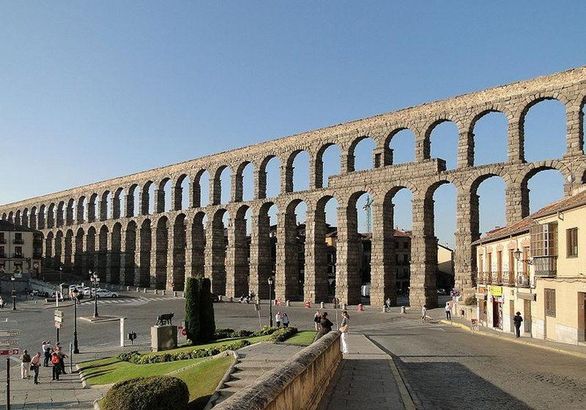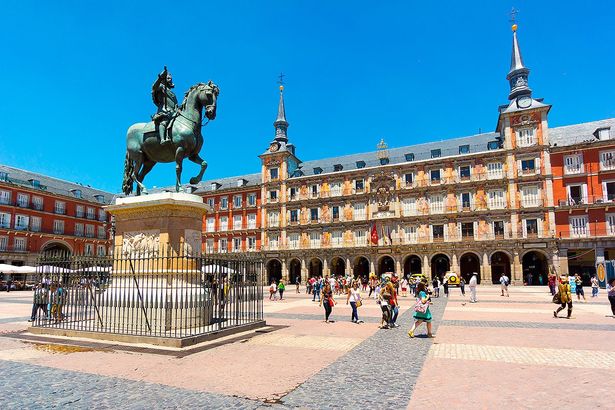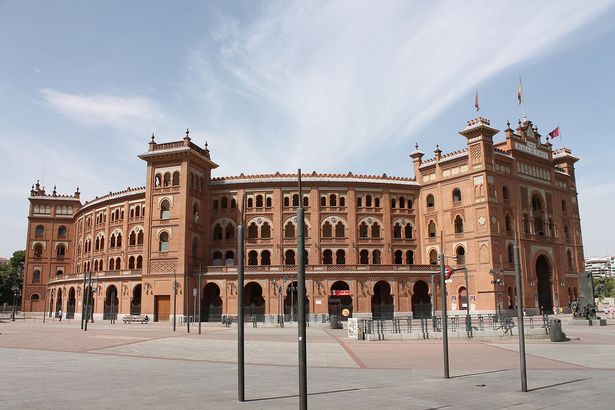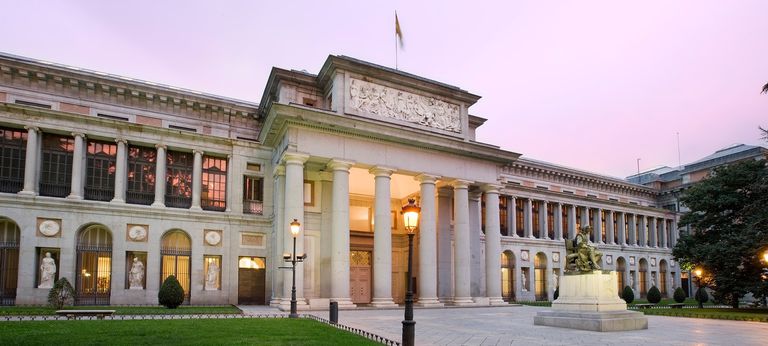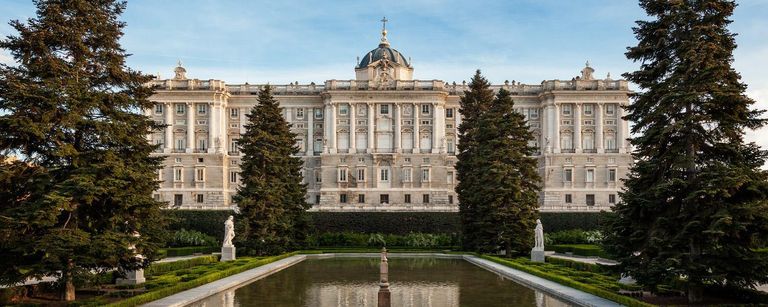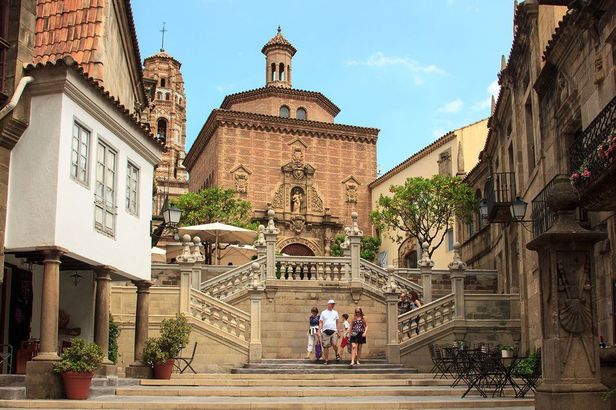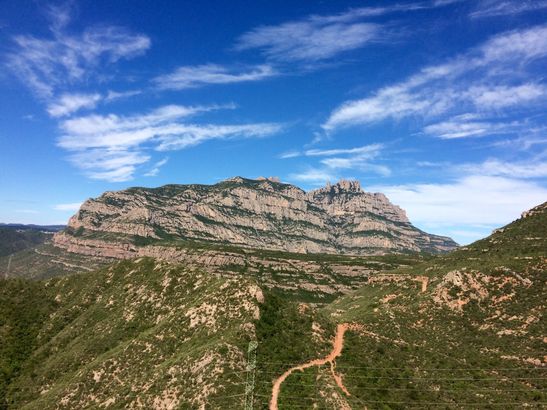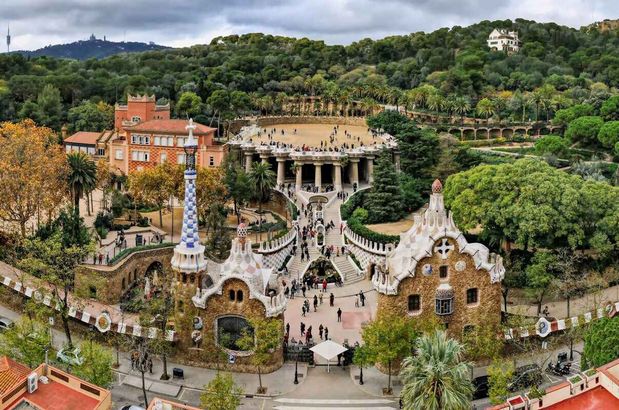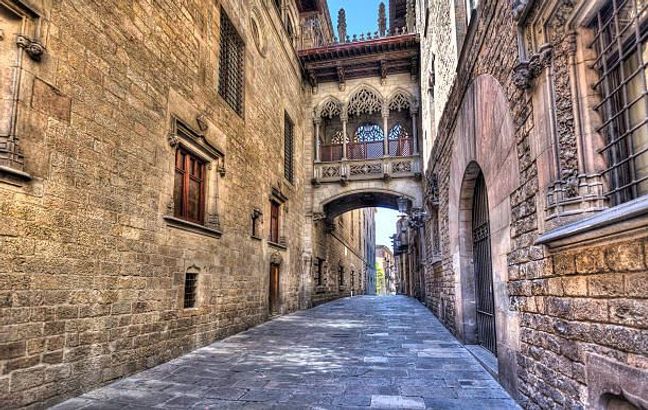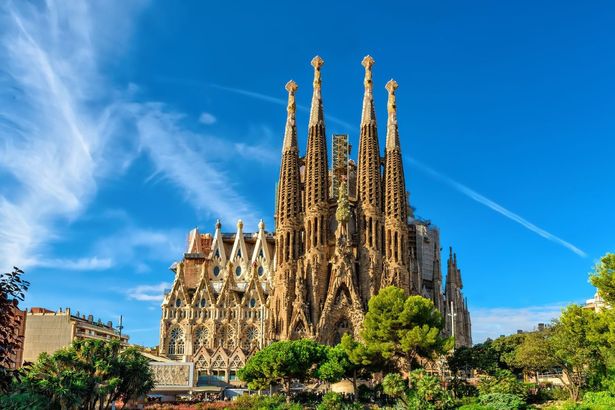It was built about 2,000 years ago and served its purpose until the 19th century, providing water to Segovia and nearby settlements. Although the aqueduct is 18 km long, only a small section passing through the Azoguejo square is popular with tourists. Due to its active use, the aqueduct in Segovia was often repaired, and therefore retained its almost original appearance, except for the stonework that has been replaced in places.
The Plaza Mayor is a major public space in the heart of Madrid, the capital of Spain. It was once the centre of Old Madrid. It was first built during the reign of Philip III. Only a few blocks away is another famous plaza, the Puerta del Sol.
At the foot of the Sierra de Guadarrama, an hour's drive from Madrid, lies the ancient palace and monastery of Escorial. At first glance, the structure impresses with its grandeur, but not everyone has the same reaction. Some called Escorial an "architectural nightmare", others - "the eighth wonder of the world". Today, Escorial is a cultural heritage of Spain, a major museum and architectural treasure.
A matador with a red rag, dodging an enraged bull - this is the association that many people have when they think of Spain. You can watch this action live at the Las Ventas bullring in Madrid. Now the arena hosts not only bullfights, but also other sports competitions, music concerts and other events.
Prado is one of the largest fine art museums in Europe, with hundreds of paintings and sculptures by world-famous artists in its collection. Since the museum's founding in the early 19th century and up to the present day, the collection has included works by Bosch, Rubens, Goya, Murillo, Durer, Poussin and many other artists whose names are familiar even to people far removed from art.
The Royal Palace of Madrid is the largest in Western Europe and one of the largest in the world. With over 135,000 square metres and 3,418 rooms, it has witnessed centuries of Spanish history. It is one of the few official seat of a Head of State that is open to the public. Almost 2 million visitors come every year to discover its rooms, works of art and treasures that are unique in the world.
The Poble Espanyol is a time machine, because once you find yourself there, it is hard to believe that you are in the middle of Barcelona of the 21st century. Old houses, workshops of shoemakers, glassblowers and jewelers are adjacent to a colorful market, a theater, a museum, establishments with traditional Spanish dishes and a square where you can often see folk dancers and singers.
The name speaks for itself, because millions of years ago there was a sea on the territory of Catalonia, which eventually dried up, and the bottom formed a mountain range. On the mountain top, surrounded by picturesque nature, there is a monastery of the same name. Here is kept the unique statue of the "Black Virgin of Montserrat", which is revered by Catholics all over the world.
Among the attractions, one can note the Gaudi House Museum, the "Hall of a Hundred Columns" (in fact, there are 86 of them), the grand staircase with fountains and, of course, the famous Gaudi bench, curved in the shape of a snake. However, it was not the bizarre shape that made this bench famous, but its length - 302 meters, which was a record for some time.
The Gothic Quarter is the heart of Barcelona's historic district and one of the most photogenic locations in the Spanish city. Centuries later, medieval buildings dating back to the heyday of the Kingdom of Aragon have been perfectly preserved here. As you travel from one architectural monument to another, you will pass through narrow streets that are almost completely devoid of sunlight, where the medieval charm is especially strong.
Sagrada Familia is one of Gaudi's most famous works in Barcelona. It is a gigantic basilica that has been under construction since 1882 and is not expected to be completed anytime soon. When you visit the building, you will notice the contrast in stone color between the front and back of the building. The interior combines natural forms with intricate details, reflecting Gaudi's vision of a divine and harmonious space.
That's all
